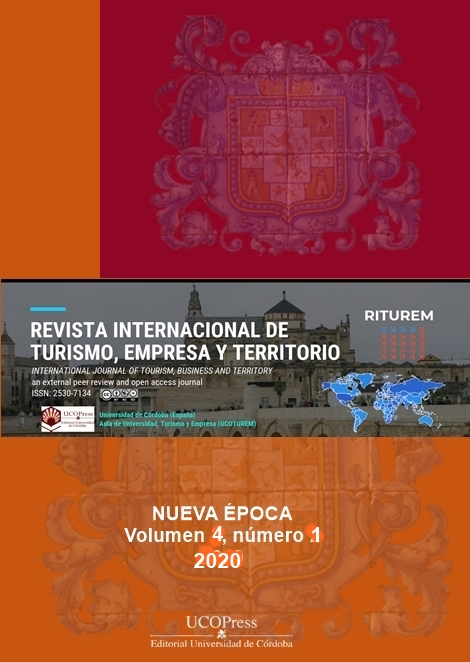Territorial zoning as an instrument for planning and managing tourist destinations affected by natural disasters: the 2016 post-earthquake strategy in Portoviejo (Ecuador)
Main Article Content
Abstract
This research aims to demonstrate how the use of the zoning technique in urban planning can contribute to the recovery of tourism and commercial management systems in cities affected by natural disasters such as this case of Portoviejo, after having suffered an earthquake of 7.8º on the Richter scale in 2016. This work uses a descriptive exploratory approach designed in two key phases: the first, in which a comprehensive tourist diagnosis was made, and the second, in which a georeferenced planimetry was created in which it represented the state of the city's socioeconomic and environmental system by neighborhoods and districts. Among the results obtained, the strong impact suffered on the local economy by the natural disaster and the positive feasibility for the execution of a tourist zoning based on the Cantonal Territorial Planning. For this, an evaluation of the different urban sectors of the city was carried out from the socio-environmental and economic point of view, until four main areas were distinguished: the area with the greatest sustainability; tour; residential; commercial and business. It concludes with the confirmation that the design of a territorial zoning constitutes a good tool for the tourist planning and organization of the territory and the efficiency of its governance system, in order to promote sustainable development and the recovery of destinations affected by it disaster type.
Keywords: recovery of urban tourist destinations; socio-natural disasters; sustainable development; tourist zoning; territorial planning.
Downloads
Article Details
Copyright Notices Proposed by Creative Commons
Proposed policy for journals offering deferred open access
Those authors who have publications with this journal, accept the following terms:
1. The authors will retain their copyright and guarantee to the journal the right of first publication of their work, which will be simultaneously subject to the Creative Commons Recognition License CC BY-NC 4.0 (Creative Commons — Attribution-NonCommercial 4.0 International — CC BY-NC 4.0 ) hird parties to share the work provided that its author and its first publication is indicated this journal and no commercial use is made.
2. Authors may adopt other non-exclusive licensing agreements for the distribution of the published version of the work (e.g., deposit it in an institutional telematics file or publish it in a monographic volume) provided that the initial publication is indicated in this journal.
3. Authors are allowed and recommended to disseminate their work over the Internet (e.g. in institutional telematics files or on their website) before and during the submission process, which can produce interesting exchanges and increase citations of the published work. (See The effect of open access: http://opcit.eprints.org/oacitation-biblio.html.
